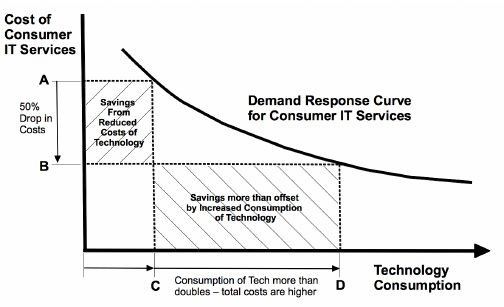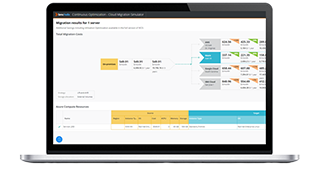Organizations are turning to cloud adoption in larger numbers than ever. In fact, Gartner reported that 85% of organizations will be “cloud-first” by 2025. From the pressure to work remotely, reduce overhead costs, provide superior service to clients, and keep up with the competition, cloud adoption is central to almost any growth strategy.
Shifting to the cloud pays off for many companies: 61% of enterprises that integrated cloud as a part of their digital transformation increase revenue by at least 25%.
However, adopting the cloud—private, public, or hybrid—requires a learning curve. Organizations need to acquire the skills and knowledge to develop the processes for ongoing operations. Those who don’t often find their efforts do not increase revenue as they expected.
Here are 12 top practices you need to incorporate as you begin to use the cloud and make it part of your IT and app dev environments. The most successful organizations in their use of public cloud have all of these practices in place.
(Want more cloud stats? Check out these cloud stats & trends.)
1. Commit to cloud-first
Before you jump into implementing the cloud, have a clear idea of the advantages your organization can gain from it and why it is suitable for your business. Identifying concrete reasons you want to move to public cloud is critical for implementing an adoption strategy and getting everyone on board.
A cloud-first commitment means that your organization will move everything to public cloud unless there is a compelling reason not to do so. Organizations that try to hold onto their on-premises applications and data will find that the results are not what they would hope them to be.

2. Designate a Cloud Steward
A Cloud Steward is a designated person responsible for leading your organization’s cloud initiative. This role includes planning, migration, and ongoing cloud operations, such as optimization, governance, and security. In some instances, the Cloud Steward may also be responsible for the contract with your cloud service provider(s).
A successful Cloud Steward needs to have both IT and business experience. IT experience alone is not enough—a successful steward has a thorough knowledge of the practical applications of the cloud.
(Understand more roles in cloud computing.)
3. Differentiate your cloud adoption approach
A well-planned cloud adoption strategy is critical to a faster and more effective implementation with reduced risk. However, there are three distinct areas of cloud adoption that require unique approaches. These three areas of cloud adoption are:
- Software as a service (SaaS) for faster access to modern functionality
- Cloud infrastructure platforms (CIPS) for creating unique functions
- Migrating current and legacy applications
When formulating your cloud strategy, evaluate each approach for a complete view that weighs the trade-offs between management and operational control.
4. Establish a Cloud Center of Excellence (CCOE)
With cloud adoption, IT no longer has centralized control of the IT infrastructure resources purchases or used. It is up to the CCoE to establish the business guidelines and standardization needed for secure and compliant business operations. The CCoE focuses primarily on creating policy and compliance for cloud usage across the enterprise.
The CCoE typically includes representatives from IT Finance, DevOps, IT Ops, and SecOps. Multiple people can be from each area, but a well-defined CCoE should not exceed ten people.
5. Create a community
Cloud adoption often starts with individuals or selected business units buying cloud services to support their IT infrastructure or application development efforts. When those purchases are siloed, the purchaser often isn’t aware of the scope of the financial commitment for their entire organization.
Good communication across the organization, including cloud benefits and cost implications, is key to successful cloud adoption. Cloud evangelism and adoption will expand as more stakeholders become aware of how it can benefit the business as a whole.
(Explore best practices for organizational change.)
6. Promote ongoing improvement and optimization
Cloud adoption is not a one-time effort. It is vital to establish economic modeling and process—and constantly revisit them. This should include procedures and metrics from the line of business, finance, and technology—for example:
- Budgets
- Value measurements
- Chargebacks
The goal is to build an approach that provides a continuous process and steps for improvement. And remember, all processes should come from the CCoE.
7. Continuously evaluate & architect for future state
Find ways to make cloud education and learning happen across the enterprise. Organizations typically don’t spend much money on education, but there are low-cost ways to teach and learn, and their adoption is part of a continuous improvement model.
- Cloud education modules are available on YouTube.
- AWS and other cloud service providers and vendors offerfree education on their websites.
- Online communities andlocal meetups provide another source for ongoing learning.
Look for ways to apply what you’ve learned to your organization and share it with others.
8. Make data actionable
Data needs to be actionable, and for that, it needs context. Cloud providers give you raw data and leave it up to you to provide the context. For example, if you get a recommendation from the cloud service provider to downsize a virtual machine (VM), what must you consider?
- Is it a VM that has a spike associated with it once a week where you will need the VM at the current size?
- Can you downsize the VM and use auto-scaling to handle the peak period?
Another area where good data is needed is understanding how you use discounted services like reserved instances (RIs). RIs are for long-term use and long-term service commitments. Many organizations start off buying RIs but don’t effectively use them. Without understanding how you use RIs, you are not optimizing potential savings.
9. Identify & model cost drivers
For some organizations, the cloud is an economic decision before it is a technical decision. It is important to determine if public cloud is the right choice. You need to compare costs between on-premises and public cloud infrastructure services constantly:
- Where do you get the best performance and cost?
- Where is the best place for each workload?
- Look at the business side of using public cloud. Where are most of your costs coming from?
There are a lot of layers of information to understand expenses properly. It is important to correlate cloud costs with other business metrics. Extensive economic modeling needs to be done to fully understand the cost benefits, if any, for cloud use.
10. Evaluate costs & benefits
Consider Jevon’s paradox. Jevon was an economist in the UK who observed that technological improvements that increased the efficiency of coal use led to increased consumption of coal rather than reduction. He argued that technological progress does not reduce consumption. This applies to cloud usage as well.

You tend to consume more cloud services as you continuously optimize cloud spend. This is one of the reasons why cloud service providers want to help you save money. They understand that you will buy more if you run more efficiently.
It is recommended that you start your cloud adoption with one-year RIs and take the time to really understand your workloads, cost, and long-term needs. Then you can determine if a one-year or three-year RI is better for your organization’s needs and what workloads should continue to use on-demand services.
It is important to understand the trade-offs of short- and long-term costs and commitments.
11. Take a business-focused approach for driving cost reduction
Once you have a process to reduce spending, you need to tie that process back to the business. That requires breaking down costs. Every organization has different goals for how extensively they want to use public cloud:
- Some may not want to have more than 40% of their IT infrastructure and applications in the public cloud.
- Others may want to achieve 80 percent usage or more.
Once you break costs down to a granular level, you can truly optimize costs and determine how you can have a tangible impact on operating and capital expenses.
12. Establish a cloud governance model
Where are you on the governance path? Governance for the cloud means establishing the policies and guidelines that allow the organization to safely and efficiently use public cloud services.
Governance should not impede users or cripple the DevOps team from acting. Successful governance requires input from stakeholders, so the business remains agile. Good governance prevents unmanaged growth, immediately eliminates waste, establishes processes for long-term optimization, and includes automated monitoring and remediation.







